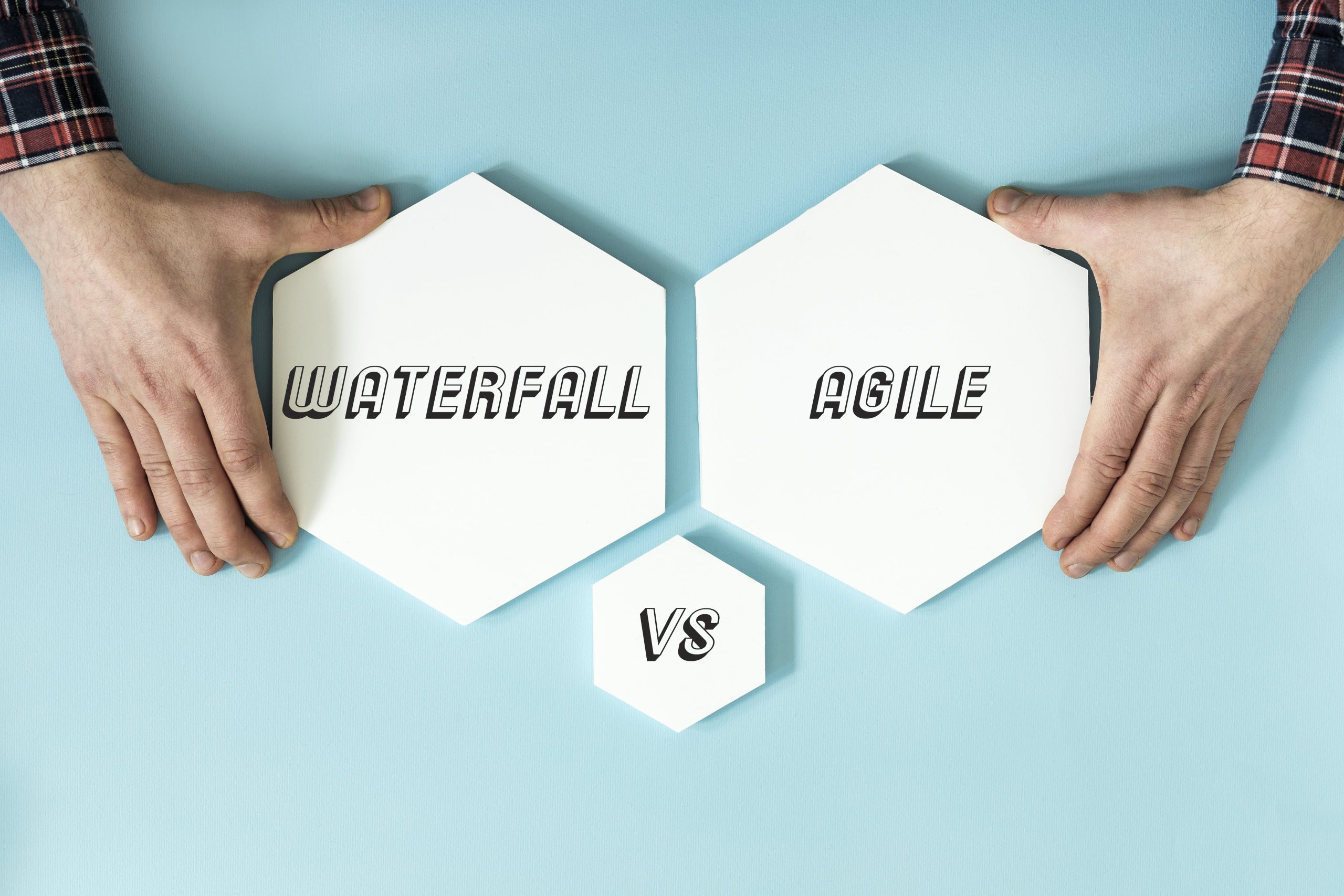This Agile vs. Waterfall decision boils down to whether you know exactly what your end goal is, or if you are open to lots of collaboration and adaptation. So, why not just use both? If only it were that simple. Let’s explore and compare Agile and Waterfall so you can make an informed decision as to which approach best fits your project.
Why Would I Use the Waterfall Web Development Methodology for My Project?
The waterfall approach is linear and follows a strict sequence of events. When one phase is complete, only then can you move on to the next – Just like water falling down a …waterfall.
The waterfall development project methodology can be explained with a finite set of phases:
- Ideation/Conception: This is the brainstorming stage when developers decide what they want to design and the reasons behind it. This is often where you, as the client, will fine-tune your ideas and offer insight into the goals of your project.
- Initiation & Analysis: This is where developers will gather and document all the requirements of the project.
- Design: Don’t let this fool you. This is not all visual design. In the design stage, developers determine the architecture of how they want their software to function, and determine which pieces require coding.
- Construction & Coding: This stage is right in the name. This involves coding and testing each piece of software while integrating units according to the software architecture from the design phase.
- Testing: This involves overall testing of the software. The testing phase typically includes user testing, bug testing, and repair of any specific issues. This is the phase where you will be able to see the results of your ideas and offer additional input for future development. At this stage, however, the project is nearly complete and ready for the launch phase, so no major changes will happen until a subsequent project is planned.
- Implementation: Here, the finished product is ready to launch!
The waterfall method tends to be a great approach for web development project managers whose clients have a set end goal in mind for their site or little to no access for their customers to provide continual feedback. Benefits include a very clear understanding of the project timeline and deliverables, even before the project begins; clear documentation of each phase in the process; and a hands-off customer role in the majority of the development process.
To Web Development Clients: If you trust that your web developers know your business well, and you have a limited budget for a great site or portal, the waterfall approach will be your go-to.
To Project Managers: If you have a customer who places their full trust in you to create an amazing site or application for them, the waterfall approach may be the recommendation you provide.

Why Would I Choose the Agile Methodology for My Web Development Project?
If you don’t want to go chasing waterfalls, the Agile approach favors adaptability and customer involvement and has become quite popular in the last decade, with customers wishing to be involved in their development process.
The Agile process involves ‘bursts’ of development with individual deliverables. These bursts are officially referred to as sprints, and each typically lasts just a few weeks. Once each sprint is complete, the Agile process uses feedback from that phase to plan the very next phase. As the name states, this method creates agility in the project and allows for adaptation to new discoveries.
While Agile development is very flexible, it contains a few core principles to follow:
- Adaptability: Agile development highlights the importance of being able to change nearly all aspects of the project, even the goals.
- Involvement: Design and deliverable units are expected to have changes throughout the project. Agile software development requires close collaboration between the customer and the development team to implement changes and adaptations.
- Lean Development: The end result of the project should be as simplified as possible. If the same end result can be achieved with just three steps instead of nine, agile development will allow for software to be designed according to the goal of end-user simplicity.
- Teamwork: Agile values teamwork above all else. Teams will continually assess how they can become more effective and adjust the agile project as they work on sprints.
- Time: Agile development takes a blocked approach to time management during projects, breaking projects into very small units. These are the “sprints” as previously described.
- Sustainability: Agile development places value on setting a sustainable pace for software development as opposed to a strict deadline.
- Testing: Agile testing happens continuously throughout the project, and customer input is continually accounted for.
Agile creates benefits for all stakeholders by creating involvement between the development team and the customer, which results in flexibility of deliverables, adaptability to newly discovered needs of the project, and ultimately a more user-friendly end result since there is constant customer feedback being shared throughout the project.
So, how do you choose between Agile and Waterfall for your web development approach when they are both good options?
Which development methodology you go with depends very much on your most valued key factors. Waterfall will best suit projects with a pre-selected team, a fixed scope, and a fixed budget. Waterfall projects are finite, with a clear beginning and endpoints, and little to no room for changes once the project is planned out.
Agile is better suited toward larger and more complex development projects, where there is virtually unlimited access to customer feedback, great adaptability to changing needs, and the ability to continually ‘test as you go’.
Nowadays, because of the customer-centric popularity of business models, development teams who use the waterfall methodology often tend to use a hybrid approach using both agile and waterfall. This is what we recommend 99% of the time because even with the huge success of the agile approach, waterfall is still a very valid methodology in specific circumstances where a clear timeline is needed. A clear timeline gives customers the means to run their business without worrying too much about their website since it’s nearly 100% handled for them.
Need Help?
At CommonPlaces, our goal is to get you to a launch-able web portal as quickly and efficiently as possible so that you can initiate your revenue-generating activities. The next steps will evolve your project into an Agile approach to enhance your site, add action items, and respond to your changing needs as you grow. Let’s talk about how we can help your site evolve and grow your business.



